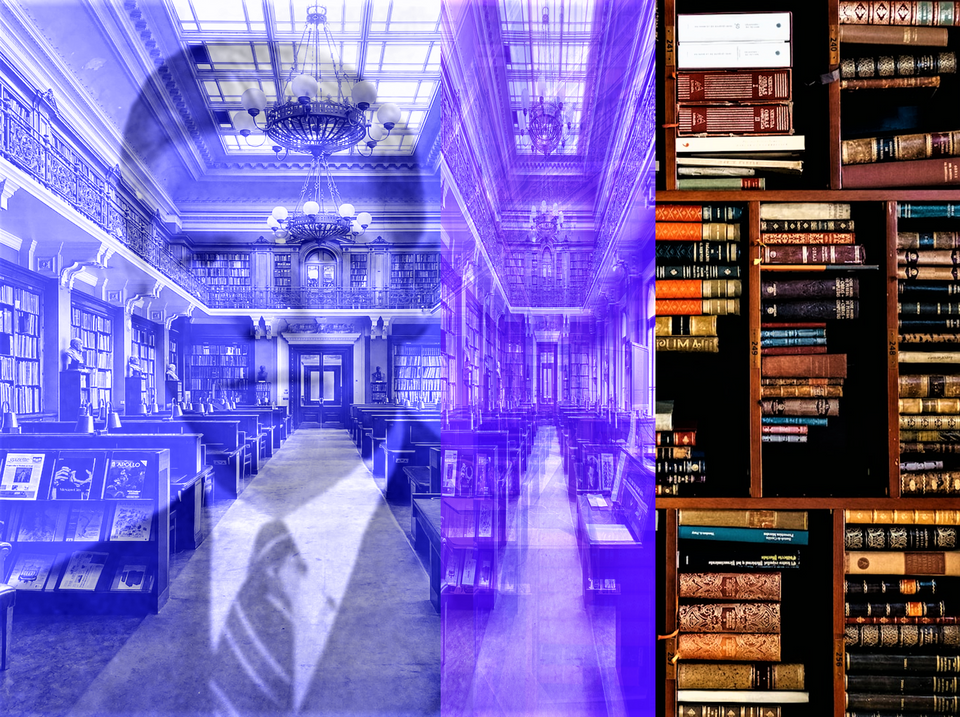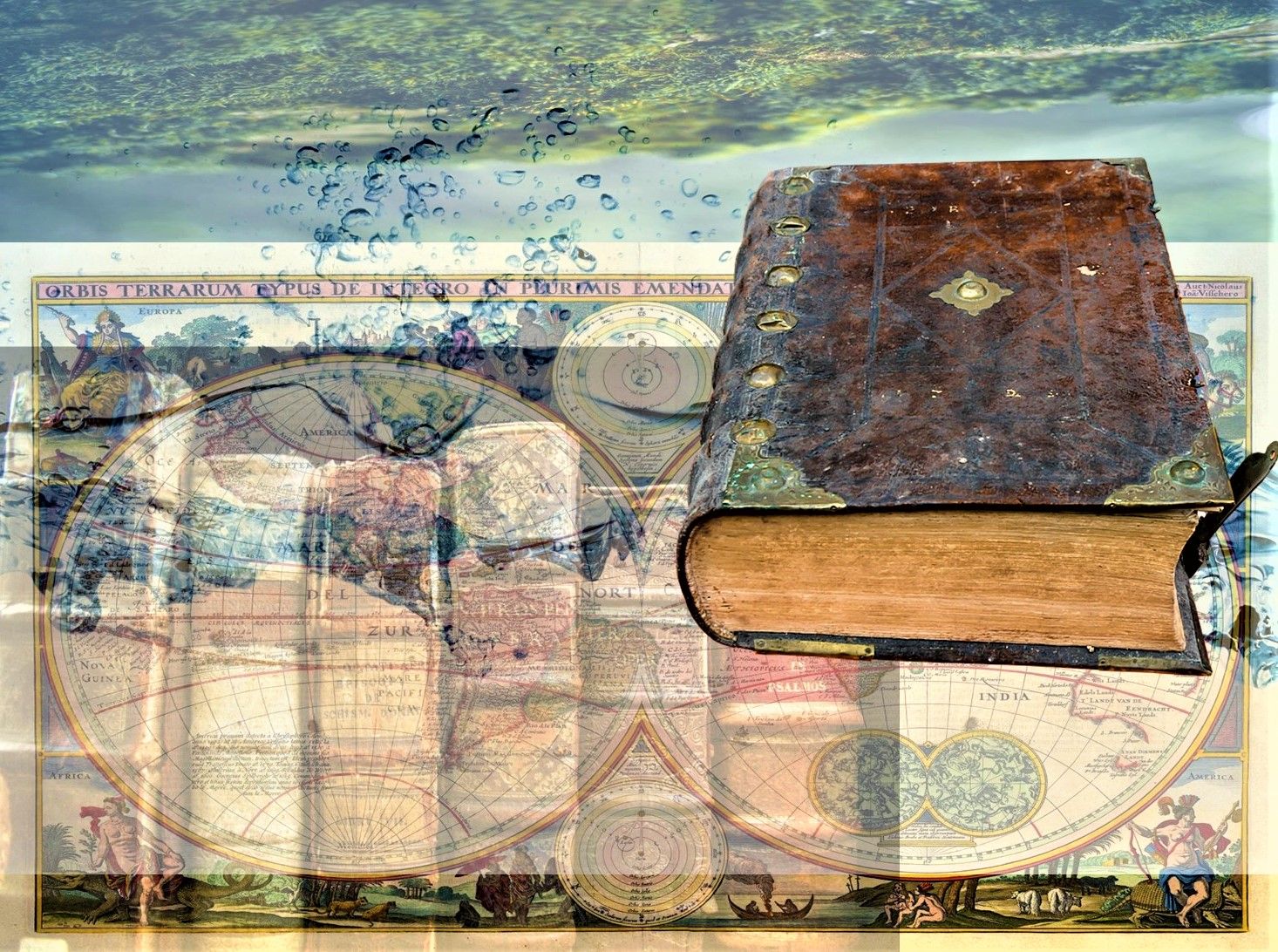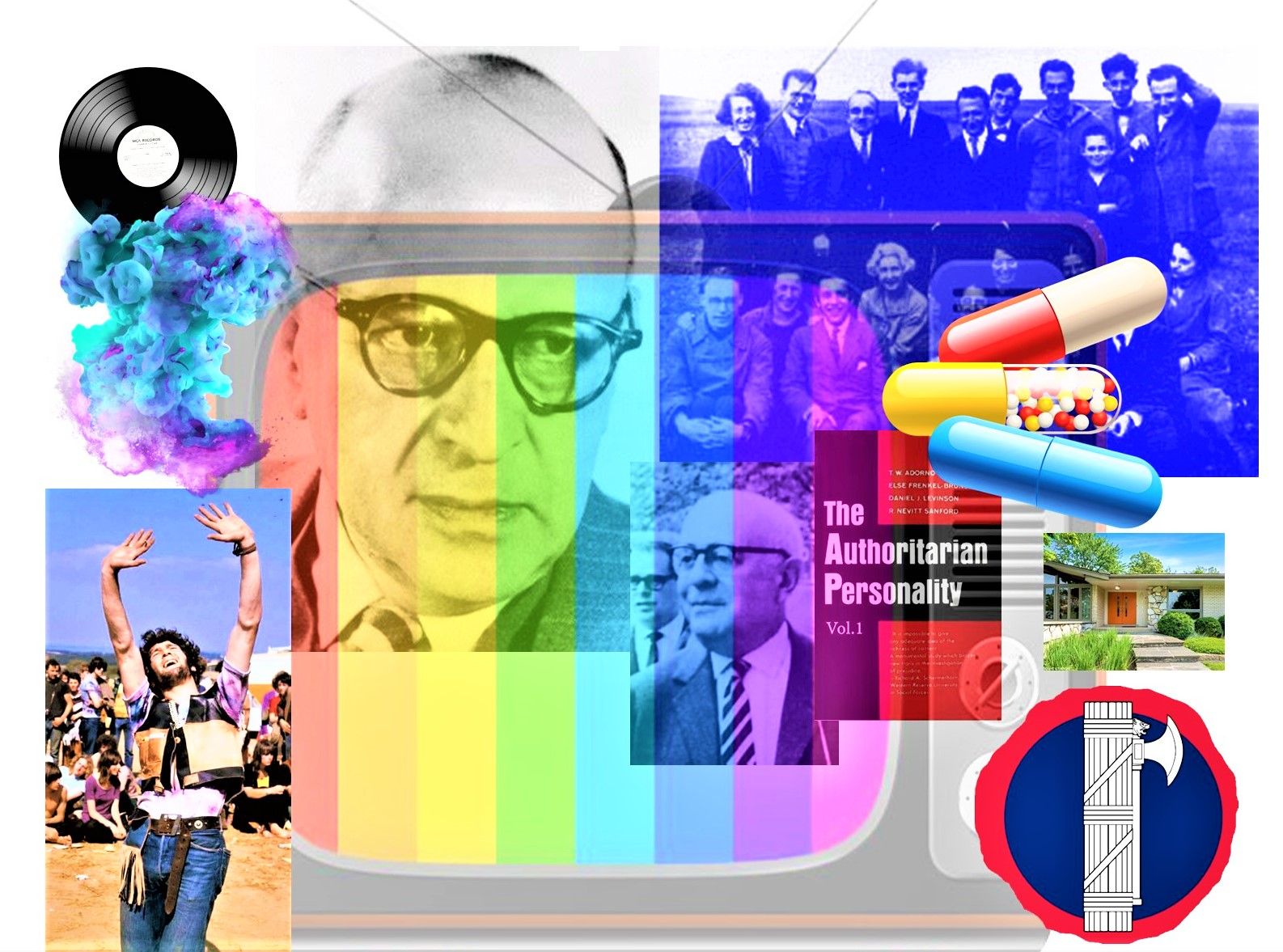A Library at Twilight

Regarding the Books of Richard Macksey and the Decline of Academic Life
One night, while searching for information on private libraries—and there are quite a few of considerable scope and merit—I discovered the collection of Richard Macksey, the Johns Hopkins professor and humanities scholar of renown. And it was a revelation.
Prior to seeing video footage of his books, which truly form an institution in their own right, the great potential of collecting was something I had rarely considered, at least not on this level. Stacked from floor to ceiling, charting a course through the disciplines and marking the decades of his career, were the 70,000 volumes of Macksey’s library, the sight of which gave me occasion to reflect. What can we learn by studying the intellectual/historical context of this great collector? Let’s begin by first considering the book stacks themselves, as their own sort of entity, a powerful character nearly able to speak for itself and, in so doing, to create a certain mood of reflection.
Exploring the Stacks
Witness to the ages, fragrant and formidable with layers of time, a book declares the power of ambience, thoroughly engulfing those who stand before its numerous ideas and narratives, especially in the case of the Macksey collection. How many readers have been awed to wander through caverns of books in old shops? The owners of such institutions often serve as tour guides of cultural memory. Countless library stacks tell the story of time in discursive fashion, opening windows of thought at any point where the reader’s hand may, by chance, open the pages. The books themselves tell a meta story of sorts, a narrative that never ceases to reinvent itself, one reader at a time. This atmosphere offers the testimony of the written page. Its message is complex and everchanging, much like the experiences of a library explorer, an adventurous reader traversing the repositories of time.
Surrounded by books, one can truly understand the strength of this testimony, stacks threatening to topple, shelves often forced to work beyond their limits, partially-veiled titles peeking out to taunt the reader. Books create the sensation of intellectual adventure, removing their occupants from monotony, all the tiresome and less elegant aspects of a day. However, going further, one can also enjoy the aural quality of a favorite bookshop, a comforting place where the attendants are curators as much as sellers, cataloging modern firsts long into the evening or studying the pages of a Kelmscott Chaucer. Often, such places bear the fragrance of old paper and leather, fragments of history temporarily rescued from decay. In short, a collection of books establishes a sense of atmosphere, as well as an invitation to adventure and inquiry. Had I been privileged to experience the Macksey collection in its splendor, even a cursory tour of the stacks would have occupied me for hours. I imagine he must have been quite the remarkable curator, happy to regale visitors with stories from the past and invite them to partake of his treasured editions. Sadly, now, we must accept the twilight of this literary age.

The End of an Era
Professor Macksey passed away in 2019, and his books were bequeathed to the Johns Hopkins Library, where they will be preserved for the generations. However, apart from old photographs and video footage, the remarkable atmosphere of his home library has passed into memory. But the loss goes even deeper, existing as a kind of meta memorial; it marks the parallel decline of American academic life in the humanities.
It seems that Macksey was part of a lost scholarly tradition, unlikely to be known again in the United States. Having flourished at a time when professors could, far more easily, enjoy upper middle-class salaries, and occupy endowed chairs, he and his generation transformed the humanities, erasing divisions between academic disciplines. Moreover, they prompted students to inquire deeply into the dark content of language, both written and spoken. The postwar years were indeed revolutionary. And the accomplishments of Macksey’s career, as well as his equally astounding library, speak to that era as both a tribute and a lamentation. Postwar prosperity, an age of optimism and entitlement on many levels, eventually gave way to a time of hardship.
Today’s humanities professors are, for the most part, contingent faculty, subject to the poverty and instability associated with decline rather than the gainful employment of progress. Splendid private libraries, and conversation with adoring students who sit at their research tables, are unknown to them; they are a generation of displaced scholars, mainly having completed their doctorates after the early 1990s. One could argue that only the best and brightest ever reach heights of prestige, and that those of lesser gifts must accept what remains, whatever crumbs of subsistence they can glean from adjunct employment. But the situation is more complicated than it appears at first glance.
The exorbitant expense of education—coupled with the academy’s reluctance to offer tenured positions—does nothing to nurture talent. In fact, such treatment destroys even the most promising scholars long before they begin their careers. Many brilliant academics, rife with potential, are likely working the nightshift at Walmart, finding themselves too exhausted to conduct research and mentor students, benefits they might have enjoyed, had they been able to support themselves in the academic life with dignity. No, there is nothing undignified about working at Walmart. However, after one has invested years of intellectual energy—as well as a great deal of money—in academia, only to be denied career opportunities of any lasting value, the question of dignity becomes relevant. How did we, as a society once so enriched by free-thinking, arrive here? The Institute of Social Research and their brainchild, Critical Theory, come inexorably to mind.
The Frankfurt School and Its Considerable Reach
Being, arguably, the most influential academic current of midcentury life, their story presents us with a necessary digression. In short, during the previous century, some of the most formidable scholars of a generation asked a question; they wondered why Marxist revolutions had not spread throughout the nations, as predicted by key theorists, a straightforward bit of pondering with far-reaching implications. The answers they formulated impacted the academic realm on an unprecedented level, creating new disciplines, and asking difficult questions. In no small measure, they eroded the social and intellectual underpinnings of the west. Indeed, the shadow of the Frankfurt School's impact is visible even now, shading the tall buildings of universities and research agencies the world over. And how, exactly, did this come about?

Beginning in 1923, a new era of study was beginning to unfold, an examination of world political and social movements initiated by the Institute of Social Research. The most prominent members of the institute, Theodor Adorno, Max Horkheimer, Franz Neumann, Erich Fromm and Herbert Marcuse redefined the western academy, establishing their rigorous, interdisciplinary analysis of society, the substance of which was compelling; a wider view of the cause-and-effect mechanisms of history opened at their insistence. Originally a Marxist study group, attempting to understand the economic forces which had failed to bring about the predicted demise of capitalism, the institute—under the leadership of psychologist and philosopher Horkheimer—departed from a strict economic inquiry in order to study culture and human behavior on a deeper level, thus changing the way humanities scholars undertook their endeavors.
Human beings themselves were, after all, the engines behind revolutions and economic movements. The measure of man was not only a matter of aesthetics and philosophy but also a component of tumultuous world events. So, people and culture had to be analyzed more assiduously. And what were the results? Anyone who has attended undergraduate lectures rife with psychological and cultural analysis can attest to the influence of the institute—informally known as the Frankfurt School. Even now, their work is the subject of much study and debate.
The Scholarship of Martin Jay
One of the most insightful and useful books on this subject is Martin Jay’s The Dialectical Imagination: A History of the Frankfurt School and the Institute of Social Research, 1923-1950, about which Marcuse himself said, “An amazing example of scholarship without dullness, of objectivity and love for the subject matter!” Perhaps less to his liking would have been The Devil’s Pleasure Palace: The Cult of Critical Theory and the Subversion of the West by Michael Walsh. As one begins to study the history of the Frankfurt School and Critical Theory, it becomes evident that their work remains polarizing to this day. A look at this realm of higher education helps us to understand the current state of things. Indeed, the far right and their counterparts on the left have weighed in vociferously over the years, both sides offering instructive commentaries.
A Conservative Reading
A thinker from the right might offer the following assessment: a group of Marxist theorists subverted the academy to bring about a cultural revolution, a takeover based on manipulating the behavior and beliefs of naïve university students. The Institute of Social Research had misread the causes of societal transformation, focusing too narrowly on economic factors, and they sought a new way to influence the movements of history. By infiltrating universities for a program of intellectual restructuring (rather than fomenting an armed revolution) Marxists achieved the overthrow of capitalist culture—and eroded the underpinnings of liberal democracy in the process. This narrative has been explored by many conservative thinkers, as a way to fathom the Frankfurt School’s influence over our intellectual life. Again, the far right tends to promote a certain view of this complex and fascinating movement. Let's consider this viewpoint more deeply, according to prevailing ideas and arguments.
From the 1960s through the 90s, professors who functioned more as propagandists than educators convinced women and minority students to play the role of victims, arming them with the bludgeon of “political correctness,” perhaps the most corrosive legacy of the Frankfurt School and Critical Theory. Whether one views this period as a liberating episode, empowering those who had long been exploited by capitalist society, or as a time of oppression—labeling many forms of expression as hate speech—the impact of this intellectual current is undeniable.
Dozens of doctoral students, educated either directly or indirectly by the institute, entered academia during this period, with publications spanning sociology, philosophy, literature, psychology, political science, and history. Indeed, there were few patches of intellectual earth untrodden by the children of Critical Theory. Beyond this, it must also be noted that Marcuse, Neumann and Otto Kirchheimer worked for the Office of Strategic Services (OSS), the precursor to the CIA. From the academy to the intelligence community, the Frankfurt School enjoyed an unprecedented level of influence, the substance of which had much to do with language, its use and abuse as a tool of politics and culture. With that in mind, a more conservative reading of the Frankfurt School and Critical Theory would be incomplete without a glance at the work of Jacques Derrida, the controversial French philosopher whose work took root in American English departments during the late 1980s. Who Was Jacques Derrida? by David Mikics is an excellent source.
For the moment, let’s focus a bit narrowly and consider an idea which underwrote Deconstruction, Derrida’s most famed and derided critical method. Indeed, it is undeniably complex, based on a belief that the written word fails along fault lines, fissures where the meaning conveyed does not match the fullness of the experience in question, or the depth of occurrences an author purports to describe. “Writing and Difference and of Grammatology,” the second chapter of the Mikics book, clarifies the subject well. (1)
Writing plainly lacks the harmony between the spoken word and the present tense implied by the naïve metaphysics of voice. (2)
To Derrida’s mind, writing loses the very impact it seeks to codify and convey to readers, a loss somehow related to a metaphysical quality of voice, an aspect of communication he believes to be naïve—perhaps unaware of itself.
In his far-reaching intellectual biography, Mikics explains the depth and breadth of this elusive thinker and offers a level of clarity rarely associated with Derrida’s extensive body of work. Interestingly, the celebrated French theorist completed Grammatology in 1966 and arrived in America to speak at a conference organized by none other than Richard Macksey. Now, we move to a left-leaning narrative of Critical Theory.
From A More Liberal Vantagepoint
That capitalism has benefited from the mechanisms of war and oppression, while, simultaneously, bringing the fruits of the Industrial Revolution to the wealthy (and a once prosperous middle-class) is undeniable. The Frankfurt School theorists understood the complexities at work here. To their collective mind, every institution and mode of thought within the west exists as part of a larger capitalist context, and is therefore in need of critical examination from the broad spectrum of an interdisciplinary approach, largely informed by psychoanalytic methods and the philosophical analysis of history. And why not equip marginalized groups for battle, providing them with Critical Theory to indict the concepts and institutions of their oppressors? Why not challenge the conformity of popular culture, the oil that fuels engines of capitalism with desire, prompting laborers to seek the fetishized object and obtain it as a commodity? After all, when the system remains free of critical intervention, totalitarianism—spotlight now on the National Socialists of the early twentieth century—can easily emerge unchallenged. And who better than the professoriate to provide a system of analysis?
Unfortunately, although rigorous, the analytical models of liberal theorists often lack clarity and accessibility.
While the interdisciplinary approach has brought us fresh insights, and a number of outstanding academic works, when taken to the extreme, it creates confusion, presenting theories which do little more than generate succeeding theories, all to no avail. Beyond this, a haphazard application, as evidenced by political correctness, can further divide groups who desperately need clarity and free communication to resolve their differences. Here, it’s worth noting that Derrida’s own peers took issue with his work.
In a letter written to protest his nomination for an honorary doctorate at Cambridge, it was said: “in the eyes of philosophers . . . M. Derrida’s work does not meet accepted standards of clarity and rigour.” (3) The complaint goes on to accuse him of employing academic “tricks” and “gimmicks” to the “silent embarrassment” of his peers, quite an indictment for a scholar still sometimes regarded as a genius. Looking beyond his awkward connection to colleagues, Derrida and the poststructuralists do have an issue with language which deserves renewed attention. Here, we find it useful to defer to the eloquence of François Jullien. I believe that one of his rich themes fits our consideration of Deconstruction quite well. He stated the following in his book, The Propensity of Things: Toward a History of Efficacy in China:
It is this realm that we are not capable of questioning, namely, the fabric of our thought that is woven by Indo-European languages, informed by the implicit categorizations of speculative reason, and oriented by a characteristic aspiration toward “truth.” (4)
And herein lies, in my estimation, the central theme of this reflection: the decline of intellectual clarity plays out, in poetic fashion, in the twilight of a grand and beautiful library, as young adjunct professors toil in Amazon fulfillment centers and undergraduates continue to take out student loans. Need we say more? This image truly stands in contrast to the halcyon days of midcentury American life. And what about the future?
In the present age of pandemics, and unaffordable higher education, it makes sense for thinkers to gather online, rather than in the libraries of scholars. Books will remain the focal point of study and discourse, but interaction will often take place at a distance, even after the current crisis subsides. So, the age of postwar scholars has drawn to a close with the passing of luminaries like Macksey, Derrida and Harold Bloom, and the parallel rise of distance learning. So many sad images arise from this state of affairs.
It remains heartbreaking to envision a scholar’s home bereft of its precious library. Yet, the darkness of the present day is also poetic; great book collections remain, and young scholars continue to explore ideas and generate impressive work, as in the previous era, the postwar years that unfolded with great brilliance and numerous shortcomings, as well. Without a doubt, much about the recent past remains to be studied and understood in light of our new era, this time of emerging crises and societal restructuring.
And what will our new world resemble? Will academic relationships continue to flourish, even as distance begins to define scholarly life? Clearly, those who came before us bequeathed great learning—and libraries resplendent with intellectual treasures—but also left us with a considerable burden; their analysis of culture left a void which has yet to be filled, one aptly symbolized by the library of a deceased professor. But ironies persist; on one of my own literary expeditions, I purchased a copy of The Johns Hopkins Guide to Literary Theory & Criticism at a used bookstore. Upon opening it, I found a library stamp declaring the volume to be a “Gift of Richard Macksey.”
Works Cited
1) David Mikics, Who Was Jacques Derrida? An Intellectual Biography. (New Haven: Yale University Press, 2010). (pgs. 63-137).
2) ibid. (p. 74).
3) ibid. (p. 223).
4) François Jullien, The Propensity of Things: Toward a History of Efficacy in China. (New York: Zone Books, 1999). (p.18).